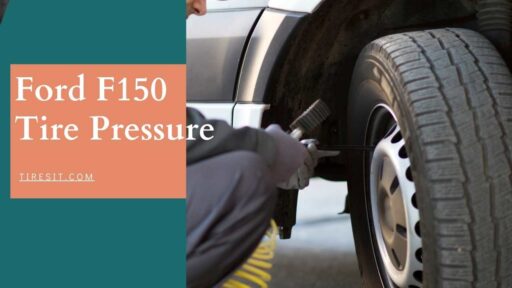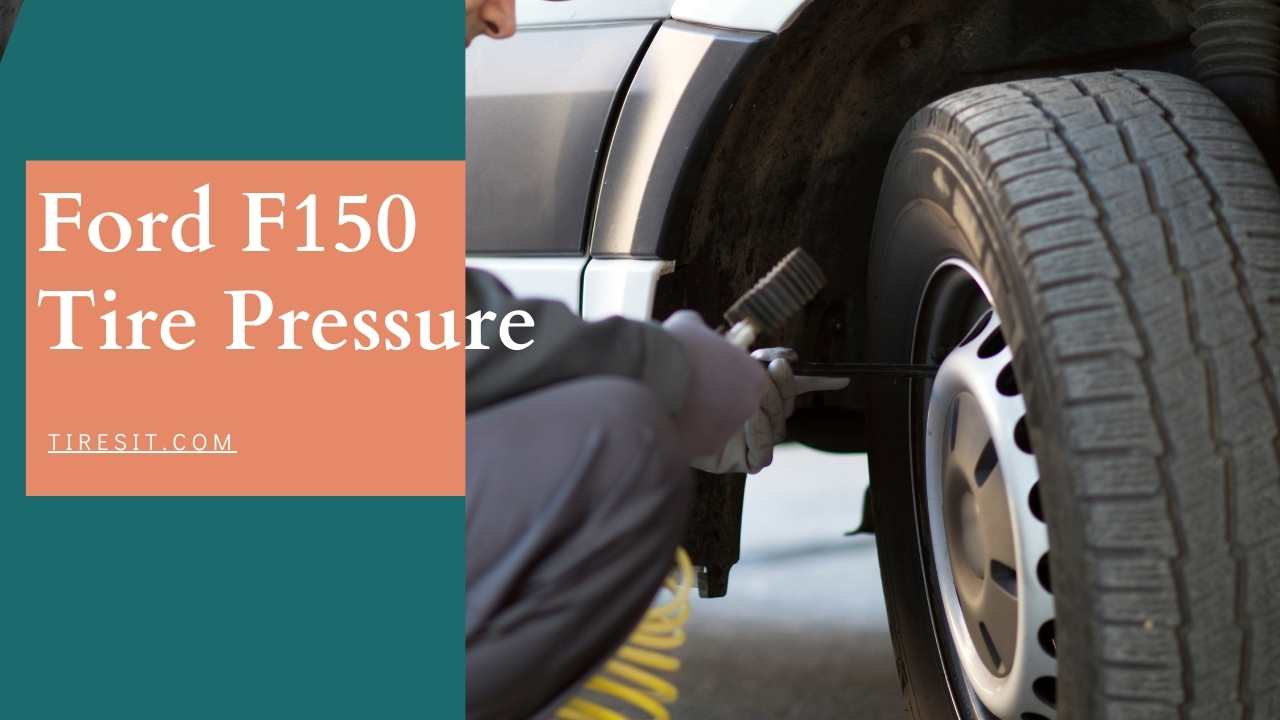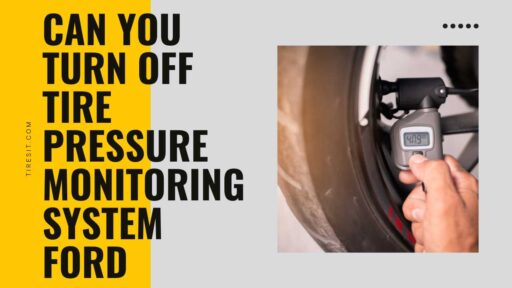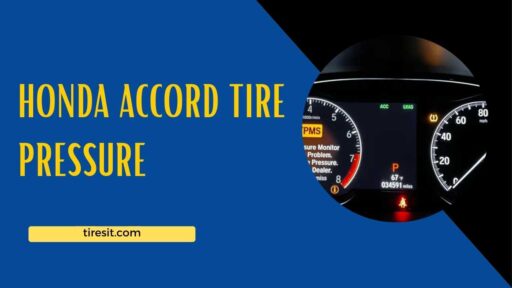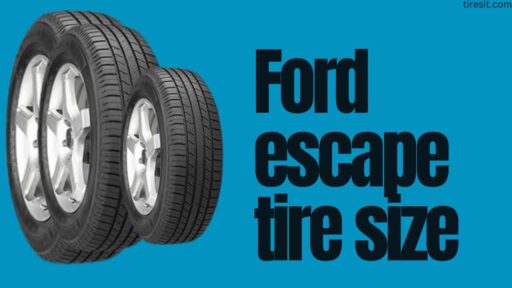Stay informed on the best practices for maintaining the Ford F150 Tire Pressure. Maximize fuel efficiency and extend tire lifespan.
The importance of optimizing Ford F150 Tire Pressure
As a Ford F150 owner, I know why having proper tire pressure is important. Your truck’s tires are very critical in ensuring you’re safe on the road and maximizing truck performance. Properly inflated tires do not only improve your driving moments but also help extend their durability. If you more information tire guide this is for you.
The impact of wrong tire pressure on safety and performance
Riding with incorrect tire pressure can have negative implications for your safety and how well your Ford F150 performs. If the tire’s air pressure is low, it will create more rolling resistance thereby increasing the work load of the engine and thus fuel consumption will also rise. Additionally, underinflated tires tend to overheat which makes them subject to blowouts especially when you are carrying heavy loads or towing.
On the flip side, high inflation may impair the handling and braking capabilities of a vehicle. When tires are overinflated, there is a small contact area between rubber and road surfacing, resulting in poor traction and high stopping distance. This can be hazardous, especially in cases of emergency or severe weather conditions.
Checking Tire Pressure in a Ford F150
When it comes to inspecting Ford F150 Tire Pressure, this exercise is both basic yet vital. First off, find a placard that shows recommended tire pressures; usually found inside glove compartment or driver’s side door jamb. The recommended psi (Pounds per square inch) for the front and rear tires will be indicated here.
To check that, securely place your tire gauge into each valve stem after removing the valve cap from each tire. This device shall then show the current reading of air pressure after pressing its head tightly against the valve stem through which the meter shows data about the air level available into such tires compared to readings given on a placard or sticker attached to it by the manufacturer indicating what PSI should be present at any time during normal usage and finally maintaining a proper balance between pressures within their design limits, so if one is low add some more air using compressor or at least visit any gas station having air pump and if another way round occurs just release the excess until it reaches number written down earlier.
Recommended tire pressures for Ford F150
The recommended tire pressure for your Ford F150 depends on two main factors:
Model year: There can be slight variations in recommendations across different model years.
Load: The recommended pressure will also depend on whether you are carrying a light load or a heavy load.
Most Ford F-150 trucks (2015 – present):
- Light Load: For both front and rear tires, the recommended tire pressure is 35 psi (pounds per square inch).
- Heavier Load: Models with the Heavy-Duty Payload Package featuring LT275/65R18C OWL all-terrain tires should maintain a prescribed value of 42 psi.
- Use the following resources to find the exact recommended tire pressure for your specific Ford F-150 truck:
- Owner’s Manual – The right tyre pressure could be found on a sticker attached to the driver side door jamb. This is the most accurate information pertaining to your vehicle.
- Ford Website – You can look up your model year on this website and get an owner’s manual or specifications document where they list tire pressures.
- Tire Pressure Placard – You may find it inside your vehicle either on the driver’s side door pillar or jamb, which shows what PSI should be maintained when either loaded or unloaded.
- The best is to always stick by car manufacturer’s tire pressure recommendations. Wrong tire pressures can mess up with the mileage, handling and even cause tires to wear off.
- Make it a habit to check your tire pressure constantly, including for the spare tire, at least once in a month and before you go for long-distance driving.
What affects tire pressure
There are various things that may affect your Ford F-150’s tire pressure. For instance, temperature fluctuations might change the pressure of your tires. In dropping temperatures, it drops down too. The opposite happens as well. At such times, therefore, checking and adjusting of the tires are necessary.
Driving conditions also influence on the tire pressures. Uneven or rough roads like potholes need abrupt changes in it leading to sudden increase or decrease of air in them when they get hit on road surfaces violently. Moreover, gradual loss of pressure could be brought about by poor maintenance of these tires like; failure to rotate them regularly or fix leaks.
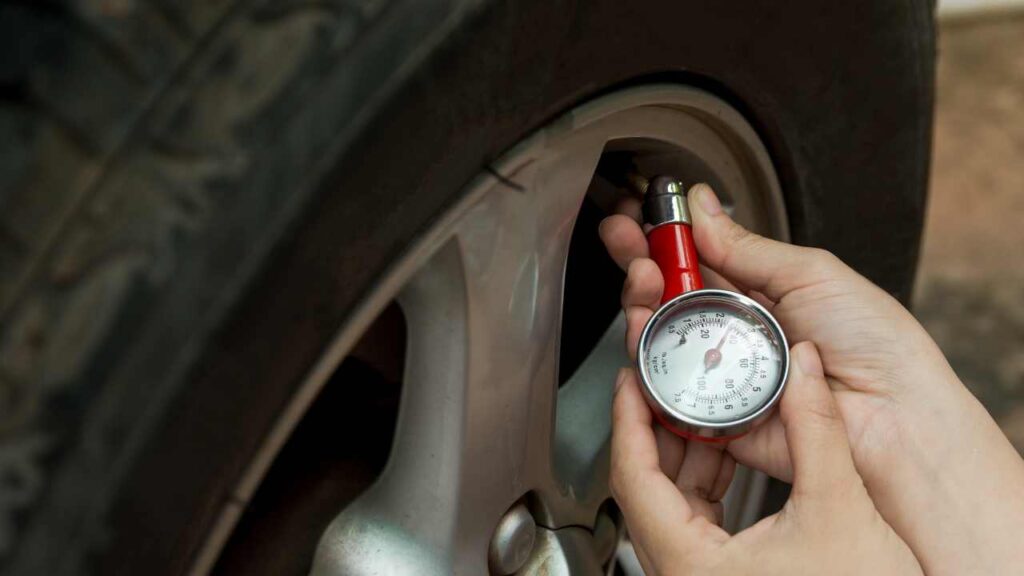
How To Maintain Optimal Tire Pressure
To maintain optimum tire pressure in your Ford F-150 and ensure safety and performance, follow these tips:
- Ensure that the quality gauge is used to check on a regular basis.
- Inflate or deflate as required so as to match the standard recommended.
- Check air before traveling long distances and carrying heavy loads.
- Promptly address any damage signs like punctures/bulges.
- Rotate tires frequently to promote equal tear & wear, thus increasing their life span.
- Make sure that your vehicle has properly balanced wheels, hence preventing uneven wearing out & early bursting.
Avoid loading beyond its rated capacity
By following these tips you will keep an optimal air level in your ford f-150 which makes driving reliable and safe.
Role of TPMS (Tire Pressure Monitoring System)
Modern-day Ford f-150 models come with a TPMS (Tire Pressure Monitoring System), which tracks pneumatic output while alerting whenever there is insufficient inflation. Hence, each wheel has a sensor that checks the pressure and sends it to the vehicle’s ECU.
Whenever there is significant deflation or over inflation, the TPMS will light up a signal on your dashboard. Do not ignore these signals instead attend to them promptly adjusting your tire inflation accordingly. However, it should be noted that TPMS systems cannot always identify slow losses of air or slight under-inflation among other things as such do not replace regular manual tire pressure checks.
Common Tire Pressure Issues In A Ford F-150 And How To Fix Them
Below are some typical problems with tire pressures found in Ford F150s, together with solutions for each:
Underinflated Tires
Symptoms: Slow acceleration, poor handling, and reduced gas mileage may occur. The sides of the tires could bulge more than they should.
Causes: If you are leaking slowly, you may have forgotten to refill after lowering your tires for off-roading or simply failed to adjust them according to season (wherein cool weather can lead to slightly diminished air pressure).
Troubleshooting
- Use an accurate tire pressure gauge to measure all four tires’ inflation levels and pump their pressures according to those in the door jamb sticker or your owner’s manual.
- Look out for any punctures that might be causing a slow leak
If you locate a tiny incision, the tire repair kit will come in handy for some time. Nevertheless, it is better to get an expert to make necessary repairs or change the tire for your safety.
Flat Tires That Are Overinflated:
What are the causes of over-inflation? And how do you know when your tires are over-inflated?
Symptoms: Lesser softness of ride and more hardness coming from the suspension. The slope is steep hence high possibilities of blowouts especially on rough roads or at very high speeds.
Causes: Inadvertent overfilling while in a gas station or failure to adjust pressure after adding air due to towing or loading something heavy may lead to over-inflation.
Troubleshooting
- Examine each tire’s air pressure using a pressure gauge tool
- Slowly deflate the excess air until the devoted level reaches what has been specified by your car manufacturer as being right. When doing this, remember that you have to press short bursts with the valve stem so as to allow a small amount of air to escape at once.
Sensor Malfunction Due To Pressure Change
Symptoms: When you inflate your tires according to recommended pressures, there is still illumination of the TPMS warning light on the dashboard
Causes: Damaged wiring in TPMS sensor could be one cause; also dead battery in sensor and wrong information sent can cause this problem too. Sometimes temporary warning light activations occur because of extreme temperature changes.
Troubleshooting
- Check your owner’s manual for details on how you can reset TPMS system and follow them consequently. Some models require certain button pressing sequences while others just need driving some distance.
- If the light stays on even after resetting, see a mechanic who will diagnose problems associated with the TPMS system.
Irregular Tire Wear
- Symptoms: One or several tires’ treads may wear unevenly having patches without tread or with too much wear on the shoulders.
- Causes: It is usually caused by underinflation, over inflation, and wheel misalignment.
Troubleshooting
- Inflate each tire to the recommended pressure level as displayed on your car’s door jam sticker.
- Visually inspect the tires for signs that indicate uneven wear then change around all tires as directed in your owner’s manual. This will make sure that wear is spread evenly among them.
- If uneven wear still exists after inflating and rotating, it is advisable to take your automobile to an auto shop so that you can know if the wheels have been wrongly aligned. Wheels that are misaligned cause parts of a tire tread to experience excess friction, resulting in faster wear.
Remember: Your safety, fuel efficiency, and tire life depend upon accurate tire pressures at all times. You can support correct tire pressures by resolving any common tire pressure problems and following a routine maintenance plan for your Ford F150.
Benefits of keeping optimal tire pressure
The following gains come with maintaining optimum tire pressures in your Ford F150:
Safety: Road grip increases with properly inflated tires, leading to improved handling of vehicles, aiding in reducing accident likelihood
Fuel efficiency: Your vehicle’s fuel consumption can be lowered when you maintain proper tire inflation levels
Tire longevity: When tires are not correctly inflated, there may be unequal abrasion, which destroys them prematurely, thereby costing more money and ultimately
Better performance: Having an appropriate pattern air pressure ensures better brakes, better handling, and good overall performance for your Ford F150.
By doing this, you will realize these benefits while maximizing your driving enjoyment.
FAQs
How frequently should I check my Ford F150 Tire Pressure?
It is important to check your tire pressure at least once a month or prior to long journeys. Furthermore, if you notice any sign of tire damage or when you have passed through rough road conditions, do examine the tyre pressure.
Can I count on TPMS alone to check my tires?
However, even though TPMS is an excellent tool that warns drivers about the status of their tires; it does not mean you should stop manually checking air pressure regularly. The TPMS cannot detect gradual air loss nor slight deviations.
What happens when one ignores the low tire pressure warning?
Failure to pay attention to low tire pressure warnings may lead to poor vehicle performance, increased fuel consumption rates, tire damage, and even safety hazards. This is why it’s important that one tackles low tire pressure as soon as possible
Conclusion of Ford F150 Tire Pressure
Maintaining proper Ford F150 Tire Pressure vehicles is a must for your safe driving experience, energy efficiency, and other vehicle performances. Constantly adjusting and measuring the air inside your tires at recommended levels while fixing any problems associated with them punctually will make driving enjoyable without worries in your Ford F150 car. Always remember that the right tire pressures are necessary for both your personal safety and for prolonging the life span of your tires thereby maximizing their economic value. In this case, therefore, always prioritize maintaining correct air pressure in order to enjoy the many advantages of owning a Ford F150 truck.

